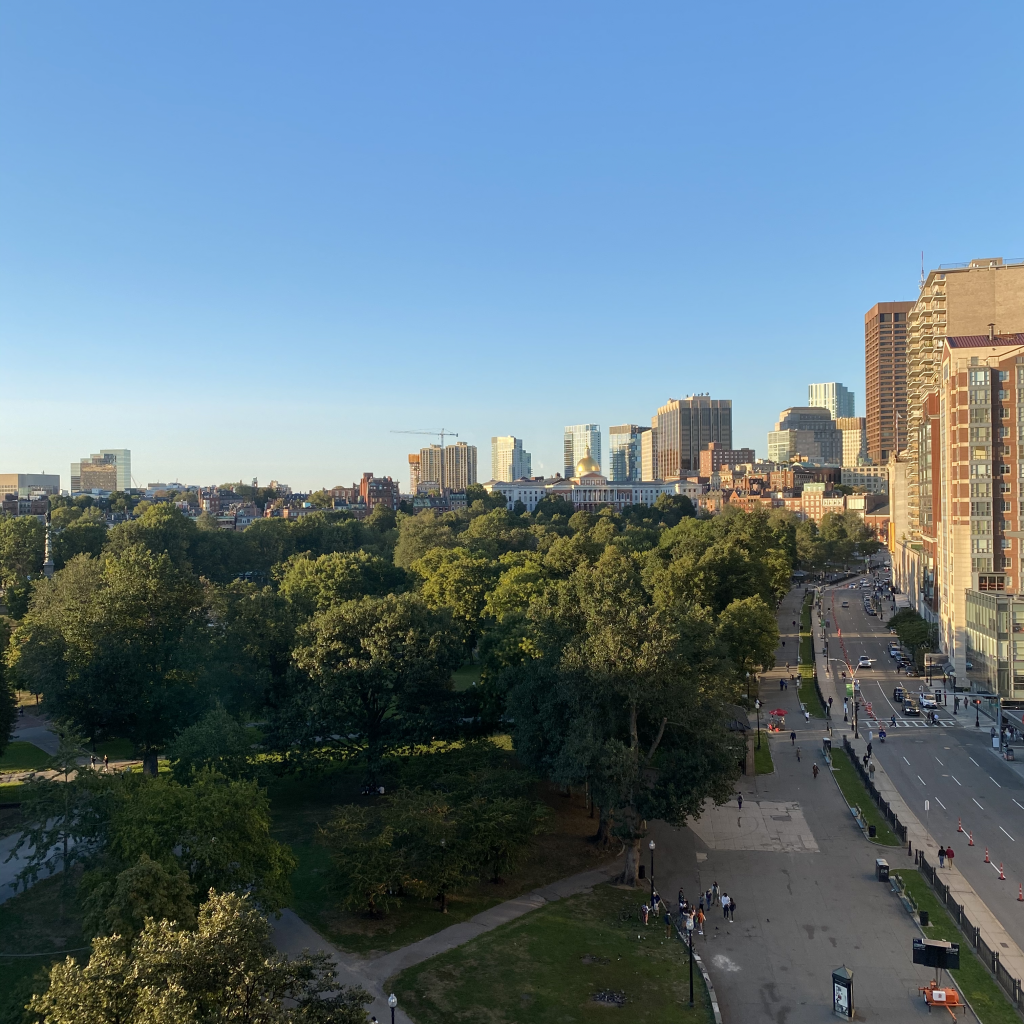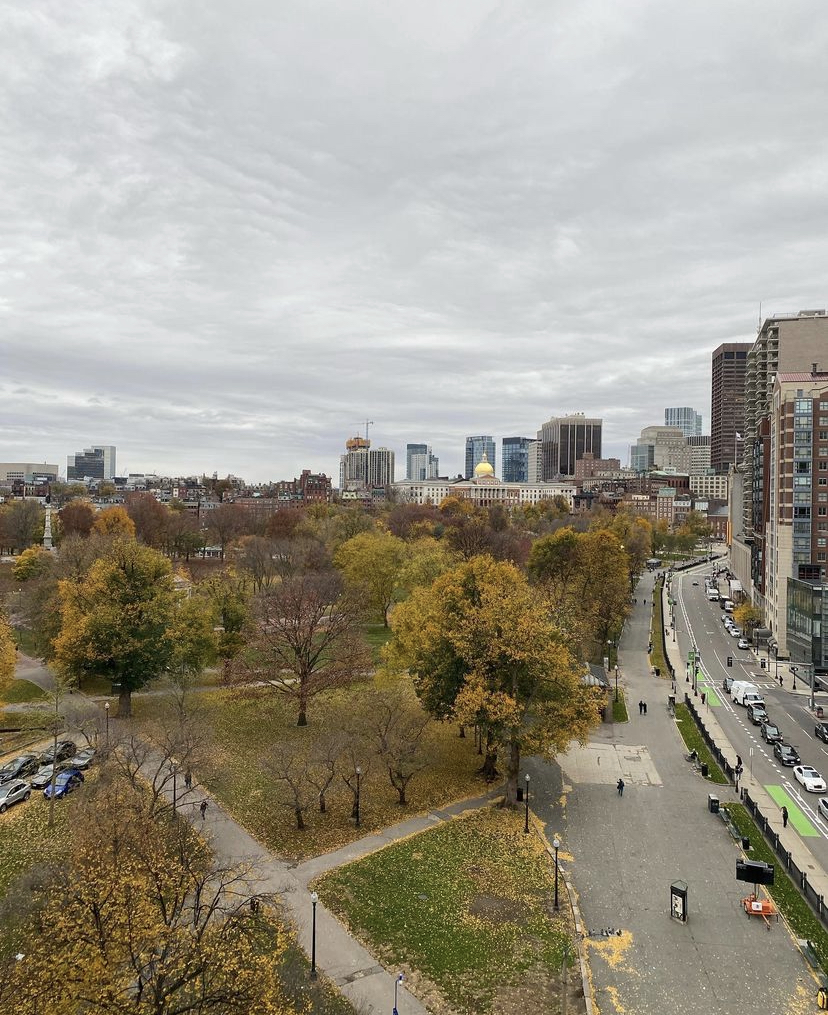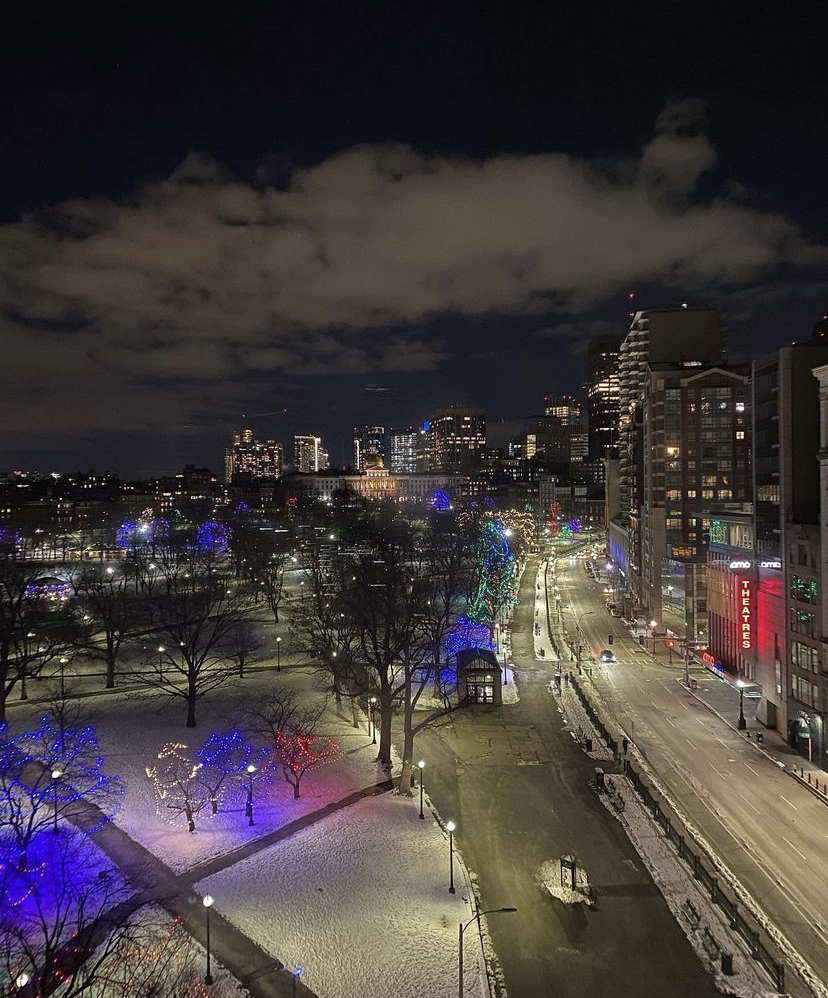by Abbie Langmead

“I’ve figured it out,” my roommate told me, about three semesters into our friendship and one semester of living with each other.
“What?”
“The only video games you like are ones that you can build in. The Sims, Minecraft, House Flipper, Cities Skylines…”
If you’re wondering, I countered, “You only like movies that have airplanes in them,” but this article isn’t about them or their Air Force aspirations. It also isn’t about video games, though this conversation got me thinking.
My roommate’s statement about me was true, and something that I have since chosen to explain whenever people ask me about my gaming habits. I love building. I honestly believe that if my life went slightly differently, I would’ve wound up studying architecture or urban planning rather than creative writing. I see the stories in how things are made, and what we value when we create. I love to see how things work, and the video games I play are a way to engage with that passion.
Cities Skylines has been a particular favorite of mine since I, like many other fans of the game, got into the hyper-detailed city builder game during the COVID-19 lockdown. I was working part-time, but during the other part-of-my-time I had nothing to do and nowhere to go. So I built my own cities, over and over again, each time trying to make a better city than the previous. The sequel game came out on October 24, so I thought now would be as good of a time as ever to revisit the city-builder genre, and how cities work in general. The game certainly isn’t perfect, and the sequel won’t be perfect either, but give me the name of one city that is. I don’t think there are any “perfect” cities–and I think that might be the point of both the cities in my games and in real life.
All of the building games that I mentioned before are technically part of a genre called “sandbox games.” Like children playing in a sandbox, there are no goals to the game. Some may choose to fight the Ender Dragon in Minecraft, but they are playing just as “correctly” if they spend their time farming wheat, or building magnificent castles just for show. However, with Cities Skylines in particular, a game where you get to build your own city, the player’s goals directly shape the route that city development takes, and therefore the shape and personality of the city as a whole. In the sequel, this reflection of the self becomes even more pronounced, as the player gets to choose which specific mechanics to unlock as the city grows through a points system.
Someone who is entirely interested in creating a profit may begin their city on maps with oil or iron, and establish large industry areas in order to exploit those resources. They may raise taxes, or promote for-profit educational practices. Sure, they’ll place down a good amount of hospitals and schools in order to keep their citizens alive (and therefore paying taxes), but the motives behind the elements of their city design may be entirely different than other players of the game.
Other players may focus on creating areas that are “good” to live in. What that means can be shaped by experiences (the “ideal” American city has changed drastically over the centuries, and is entirely different from the ideals in other places in the world), but oftentimes have some relatively common points. These cities are often well-educated, have ample “third spaces” and are aesthetically beautiful. Detailing cities with small props or textures is really common for these kinds of players, along with downloading mods that can allow for prettier spaces. I lean more towards this aesthetic type of player. For me, I tend to prioritize walkability and each neighborhood having a unique personality and things to do. Those elements are something that I find particularly striking about the cities I’ve spent time in (mostly my hometown of Boston, my sister’s city of New York, and San Francisco).
Both types of players are reaching perfection in their Cities Skylines games, but neither are the same sort of perfection. Politicians debate what the future of their cities should look like regularly, and their stakes are a lot higher than the ones in my late-night gaming sessions. Additionally, none of these interests in truth or fiction can truly create a perfect space. In the game, as in real life, creating a good city is a constant balancing act between interests. If you do not have enough housing for everyone to live, enough places for those people to work, and enough products to sell the workers, then your city will die. If the routes between these interests aren’t connected enough, your city will die. If they are too connected, there will be traffic, and then this cycle will slow down so much that your city will die (which is my usual downfall in Cities Skylines, something I think stems from my experience in my hometown).
This “city death” or “failure” in the game doesn’t stop at just this balance either; people will abandon cities after natural disasters, illness outbreaks, or even if there aren’t enough educated workers for certain jobs. Your choices in the game come at the cost of something else, with city survival as a looming consequence to poor planning. For example, my cities almost always begin in deficit, to the point that I turn on “unlimited money” as a default. My cities also have awful traffic, often because I view spaces through my own pedestrian experience rather than the needs of cars and cargo. No matter what choices you make, there are obstacles to overcome and sacrifices to be made in your cities.
Looking at real life, this also rings true. Cities like Boston have archaic road planning and terrible transit options, which in Boston has led to the second worst traffic in the country behind Chicago, and fourth worst in the world behind London and Paris. Cities across the world fail to act as their air and water sources are polluted, harming their citizens’ health due to political concerns. In many neighborhoods across the nation, the idea of suburban freedom and European concepts of land ownership have led to car-dependance, less accessible housing, unequal education, and at times, food deserts. None of these decisions were made overnight, or even by a singular omniscient “player” dictating an entire city throughout years of development (but simultaneously, only with contemporary technological advancements). The political and historical values of our communities led us to the exaggerated and extreme city problems that we see in Boston, in the U.S., and globally.
While Cities Skylines can replicate the impact of city planning so well that it is used in both classrooms and by professional city planners across the globe, it does not replicate the history or varied interests upon a space of land. When you begin a game of Cities Skylines, you are given an entirely empty plot of land. While planned cities do exist in real life, such as Brasilia, Singapore City, and even Washington D.C., these spaces still have history that led to their modern day development, and essentially have never stemmed from vast plains with minimal forestry and absolutely no residents.
Oftentimes in reality, development comes at the cost of displacement, such as colonization efforts across centuries or the development of Central Park in New York City forcibly removing the Black neighborhood of Seneca Village. There are very few entirely vacant areas of land that can support hundreds of thousands of citizens, and if there were it would be at a great environmental cost. With the freedom of a sandbox game that Cities Skylines provides, the only stories and history that are created come from the player’s internal dialogue, and perhaps the assets they download from the Steam Workshop. For some players, history is a massive part of their game, even if they invent it themselves. Some players manicure every block, name every side street, and even create recurring characters (like the Rockefellers or Kennedys in our world) that give their cities a sense of place. Others let the game randomize their neighborhood names, businesses, and let the communities pretty much name themselves. I would like to be the historical type of player, again loving cities with personality when I travel, but in actuality I tend to name my districts after the cardinal directions moving away from the “Central Square” I build my first residential neighborhood in.
And with this, comes the biggest problem with Cities Skylines cities—or at the very least—the thing they lack the most.
They are not alive.

News Flash: Video Game Player finds out the Tiny Avatars in their Screen aren’t Real!
Yes, but stay with me for a bit. Cities are beautiful because they are built by people creating a community. The interactions that we face in our day-to-day lives have the potential to change us, and allow us to create communal values that we bring into our politics as we push our cities into the future. Cities are beautiful because they reflect the people who live within, even when the wealthy few call a good amount of the shots. While the “what” of certain actions can be depicted through Cities Skylines, the “why” can only come from living people, whether by the city dwellers driving their own cities’ progress or by the gamers determining the values they want their cities to present.
In seeking this “Living City,” I finally picked up a book that my dad had been recommending to me for months. He’d praised N.K. Jemisen in the past, and he praised The City We Became, the first of the author’s Great Cities duology. In Jemisen’s books, the city being alive isn’t a metaphor for how we all come together to build and change our communities. Cities in her world are actually alive, determined by a magically selected “Avatar” that exemplifies the city’s nature, oftentimes with city-specific powers on their turf. Cities grow over time until they are “born,” fighting off threats from a metaphysical other known as “The Enemy” to either gain prominence, such as the book’s Avatars of Sao Paulo, London, and Hong Kong,or die,such as what Sao Paulo’s Avatar claims happened to New Orleans. (I would presume this city death also happened to Boston* due to all the Boston Slander in the series, but I am willing to put aside my personal bias towards my hometown for an interesting novel).
In Jemisen’s New York, everything is further complicated. While there is one “New York” Avatar, a Queer, Black graffiti artist navigating homelessness, each borough also has its own Avatar with their own distinct energy. Manny, who is the Avatar of Manhattan, is a wealthy newcomer to the city, a student, and a rather aggressive and forceful leader. Brooklyn Thompson, who shares the name with her borough, is a former rapper, turned family-woman, lawyer, and city councilwoman. Padmini, who resents her identity as Queens, is an international student from India living with her family. My favorite, Bronca Siwanoy, is a temperamental elderly Lesbian, working to preserve her community in The Bronx and support Indigenous artwork in a deeply colonized city. My least favorite, Aislyn Houlihan, rounds out the team as Staten Island, who never leaves her borough despite the allure of the city and her terrible homelife. Not only does this cast of characters obviously fight, but The Enemy attacks before the city is born, gentrifying neighborhoods and pushing communities out to kill New York before it even awakens.
The Great Cities duology doesn’t attempt to glamorize New York, and never tries to perfect it. Instead, the imperfections and flaws of the individual boroughs are what gives the story meaning. The villain is the one that tries to make everything the same, evaporating at the signs of art and liberation that each of the perspective characters provide. Perfection is the enemy of a living city. Perfection, as proven by all my attempts in Cities Skylines, is impossible. Every set of values is going to bring along some flaws. When we create a space, either me in my Cities Skylines save files or Jemisen in her novels, the values that we seek out are going to leave other things behind. We have to balance interests for survival, but this balance will still never be enough. The nature of a city will always come up short, reflecting our own imperfect selves in the process.
New York is imperfect at the end of the first book in the duology, The City We Became. The borders of the city have become blurry (with one distinctly not-New York city being included, and a certain New York Borough being explicitly renounced), and the evils of a gentrification still loom in the distance. Despite the evil and metaphysical villains being vanquished at the end of the duology in The World We Make, there is still so much tension to be resolved (both between the NYC Avatars and the city itself). That is what makes a city beautiful, that is what makes the reading experience of Jemisen’s works worth it. While we in Boston may complain about the T, the tourists in the Common, or that awful intersection of Essex, Lincoln, and I-93, we have to admit that those aspects of humanity bring character to our space that video games can’t replicate. While we can build a more “perfect” world online, even that isn’t enough to truly be perfect.
I’ve found that the best way to play Cities Skylines is to look around you and plan. Visiting my sister in New York always gives me creative ways to readjust my train systems. Walking around Boston’s Seaport makes me reconsider how I plan to navigate my coastal areas. The Emerald Necklace is an inspiration to me, as is the Harborwalk, even if I’ve never found the perfect Cities Skylines map to implement them in yet. Sure, Boston isn’t perfect. I can think of more things wrong with my hometown than I can right. (To be fair, I am writing this on a shuttle bus because the Green Line is having trouble. Again.) But I can’t deny that it is alive, and that growing up here has made me the person I am today. The jay-walking, non-rotor “r” talking, hungry for learning person that I am today.
If I can’t build with my hands, the least I can do is build communities; either on my computer, in my writing, or in real life.
*And if you’re wondering, I believe that if Boston were one of N.K. Jemisen’s Great Cities, the embodiment of Boston would be a thirty-something construction worker living in Dorchester who drops the letter “R” at the end of every word and pronounces “noon”, “nun”, and “none” the same, a middle-aged nurse living in East Boston who makes a Dunkin run every morning for their team, or a student commuting from Brighton who is always late for class because the T is (once again) down.
